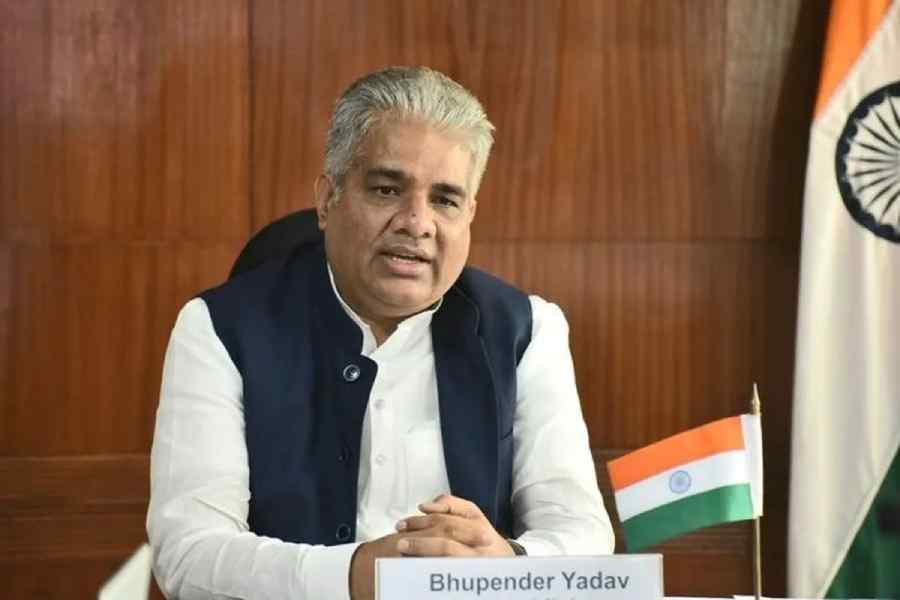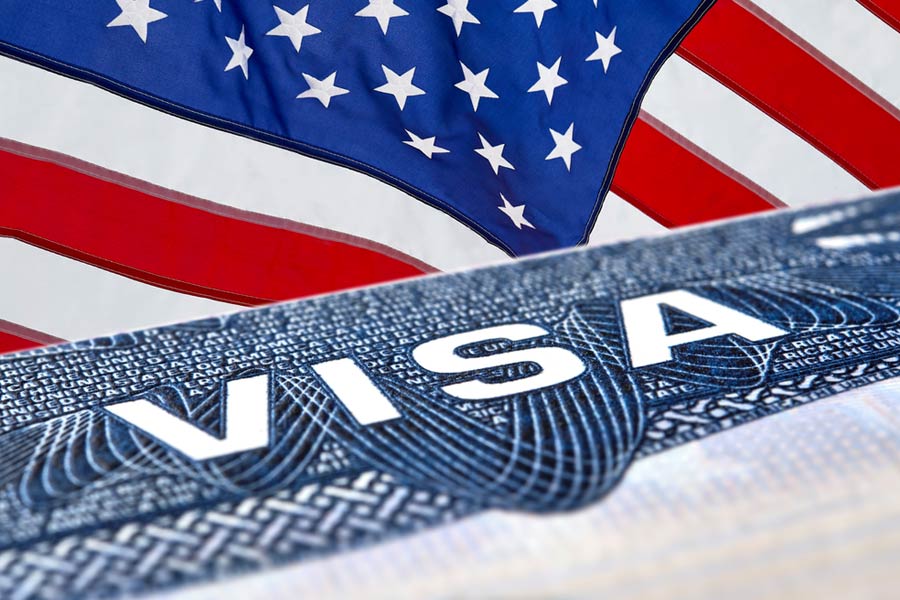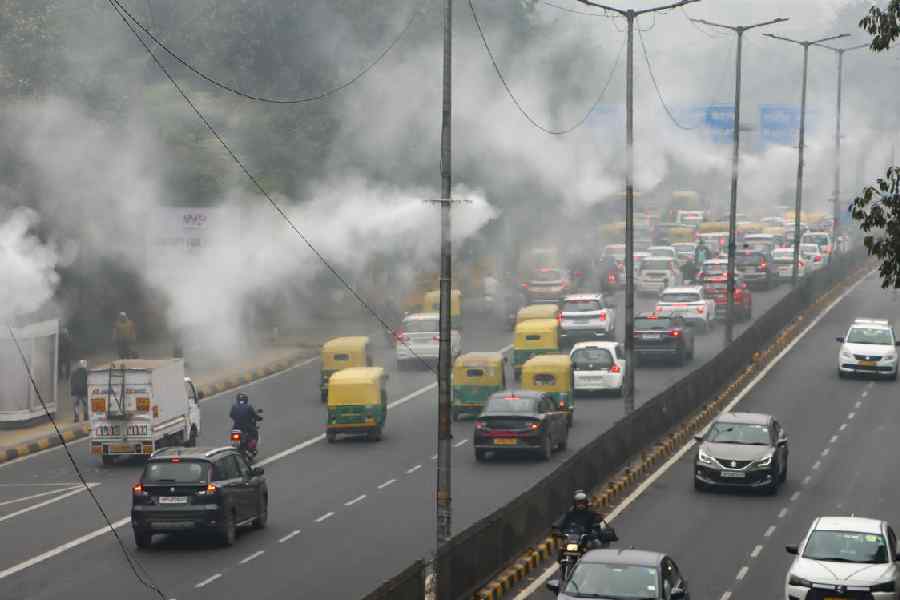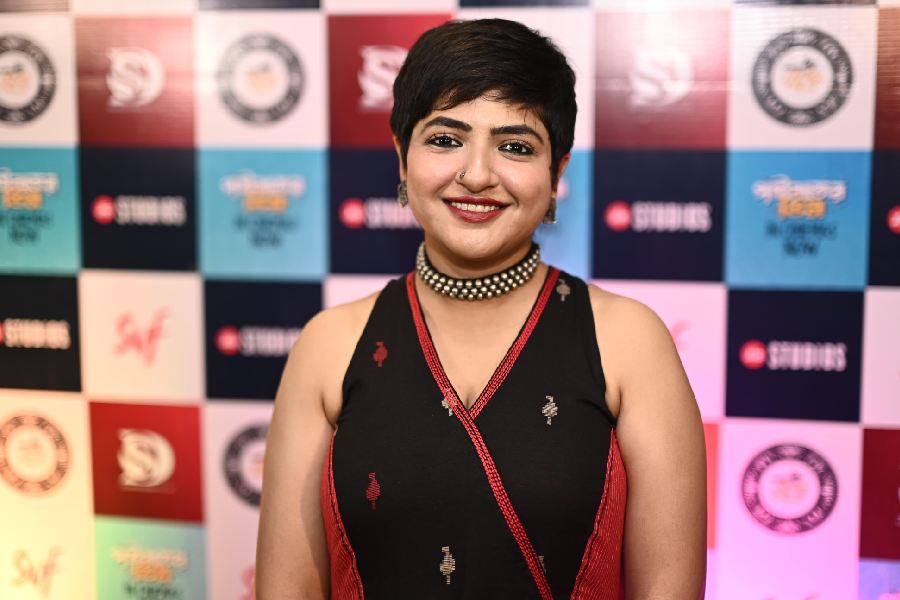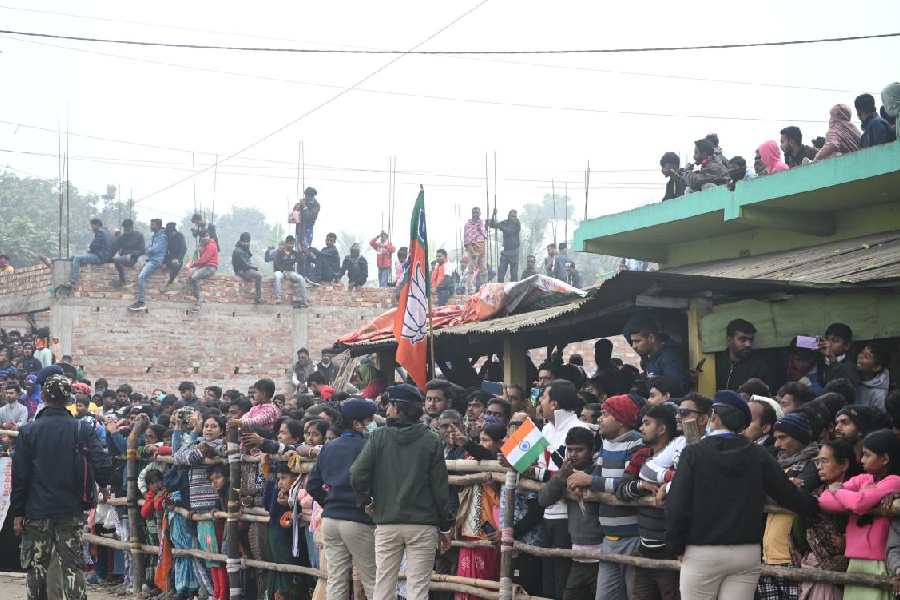 |
| New entrant Shailendra Pai wants to offer premium wines under his Vallonné label Location courtesy: Asia 7, Palladium, Mumbai Gajanan Dughalkar |
When Shailendra Pai launched his Vallonné wines recently, he was clear about one thing: Vallonné would be a boutique winery serving premium wines. “We want to offer premium wines at affordable prices,” he says. Pai’s focus on quality is paying off as wine-lovers are raising a toast to his Vallonné Merlot.
Meanwhile, New York-based serial entrepreneur Girish Mhatre, who launched Good Earth Winery in December, wants to make “small amounts of very high-quality wine” too. Mhatre, is pitching Good Earth Winery as a “niche luxury brand”. He’s launched the most expensive Indian wines with Basso, a Cabernet Sauvignon reserve, and Brio, a Shiraz reserve, priced at Rs 1,450 and Rs 1,375 respectively.
Pai and Mhatre are banking on the revival that the 1-million-case Indian wine industry is finally beginning to show after a miserable two years, when it was hit by the economic recession and the Mumbai terrorist attack. Indeed, the mood is optimistic as new players sniff out fresh opportunities while existing majors like Sula and Grover Vineyards are on a high-growth curve.
 |
| Wine bars like The Den in Mumbai could help to boost wine consumption |
“I’m very optimistic about the future of the Indian wine industry. After a little hiccup, there’s very strong growth ahead,” states Rajeev Samant, CEO, Sula Vineyards, the new market leader following the fall of Chateau Indage.
“The industry is well-poised to get back to its 30 per cent growth,” adds Abhay Kewadkar, director, Four Seasons Wines and business head for wines at United Spirits.
The accent is on doing things differently. New players are playing on the boutique winery tag while existing ones like Vintage Wines of the Reveilo label fame are introducing new grape varietals.
 |
| Rajeev Samant is consolidating Sula Vineyards’ market leadership in all segments with labels like Mosaic covering the lower end |
More premium wine is being served too. Sula recently launched its Rasa Shiraz 2007 reserve wine, which became the first Indian wine to pick up a medal at the recent Syrah du Monde competition in France. Four Seasons too introduced two Barrique Reserve wines recently.
The retail avenue is opening too with cafés like Mocha and Barista Lavazza serving wine along with their hot cuppas. Then, in the key Delhi market, the government has allowed supermarkets to carry wine besides offering cheaper wine-and-beer licences to restaurants.
 The industry isn’t out of the woods yet. Riding on euphoric 30 per cent growth, winemakers were in expansionist mode when the trouble began in 2008. With supply soon outstripping demand, the scores of wineries that arose especially in Maharashtra found they had tankfuls of often poor quality wine they were unable to sell. The result: heavy discounting at the distributor level, which has hit margins. Meanwhile, players like Diageo have exited while Chateau Indage is facing bankruptcy proceedings after it over-leveraged itself to fund its overseas expansions.
The industry isn’t out of the woods yet. Riding on euphoric 30 per cent growth, winemakers were in expansionist mode when the trouble began in 2008. With supply soon outstripping demand, the scores of wineries that arose especially in Maharashtra found they had tankfuls of often poor quality wine they were unable to sell. The result: heavy discounting at the distributor level, which has hit margins. Meanwhile, players like Diageo have exited while Chateau Indage is facing bankruptcy proceedings after it over-leveraged itself to fund its overseas expansions.
The mood’s turning, however. Says Kapil Grover, director, Grover Vineyards: “I’m bullish about the future.” He feels wine will remain a drink for the top two per cent of India’s populace. “Fortunately, this comprises 20 million people. The market for Rs 400-plus wines is six million bottles. Even if this population has one bottle a year, it will grow to 20 million bottles,” he says.
The new players are playing the premium game. Take Good Earth Winery. For Mhatre, the recession was opportune as, instead of building a winery, he used the excess production “as a quicker way to market”. His winery procures base wine from York Winery in Nashik, which is finished by his wine-maker.
 |
| Four Seasons Wines’ Abhay Kewadkar has tied up with Barista Lavazza to widen the reach of wine |
“This allows us to build a brand and assess the market potential before we commit to capital expenditures,” says Mhatre, who will launch Antaraa, a Cabernet-Shiraz, at Rs 800-odd shortly. “The premium end is the only opportunity for a small producer,” he adds. And while he’ll build a winery eventually, “it will always be a boutique operation”.
Meanwhile, Pai’s busy promoting his premium Vallonné wines. Pai’s not new to wines having worked with Champagne Indage from 1986 to 1991 before co-founding Renaissance Wines in 2004 only to sell his stake in 2006. Now, he’s back with Vallonné Vineyards.
Pai is currently producing 70,000 litres at his 200,000-litre winery. He has launched five wines ranging from Rs 475 to Rs 720. “We’ve already made a presence in the market,” says Pai.
Meanwhile, players like Sula and Vintage are introducing new varietals. Sula released a Riesling last year. And Vintage has introduced two Italian varietals. There’s the Grillo, a summery white wine (Rs 605 in Mumbai), and Nero d’Avola (Rs 645), a fruity red wine.
 |
| Rajeev Samant is consolidating Sula Vineyards’ market leadership in all segments with labels like Mosaic covering the lower end |
“We always wanted to bring new varietals. We chose these Sicilian ones as the climate is similar to Nashik,” says Yatin Patil, managing director, Vintage Wines. By end-2010, he’ll bring another Italian varietal, Sangiovese. “The Indian market is maturing. Consumers are looking beyond sweet wines,” says Patil.
 Indeed, Sula, with its six-million-litre capacity and 60 per cent market share is serving every consumer segment. In the last 18 months, it has moved, like Indage, to cover every price point though it’s more quality-conscious. So its portfolio ranges from a Rs 130-port wine to Rasa at Rs 1,080 (Mumbai prices). Last year, it launched the Mosaic label at Rs 330- Rs 360, and before that, the Samara label at Rs 165. “Last year, the move into the lower price category worked very strongly for us. At one point, we were focused on the Rs 400-plus segment but there’s a huge demand for lower priced wines, which we couldn’t ignore,” says Samant.
Indeed, Sula, with its six-million-litre capacity and 60 per cent market share is serving every consumer segment. In the last 18 months, it has moved, like Indage, to cover every price point though it’s more quality-conscious. So its portfolio ranges from a Rs 130-port wine to Rasa at Rs 1,080 (Mumbai prices). Last year, it launched the Mosaic label at Rs 330- Rs 360, and before that, the Samara label at Rs 165. “Last year, the move into the lower price category worked very strongly for us. At one point, we were focused on the Rs 400-plus segment but there’s a huge demand for lower priced wines, which we couldn’t ignore,” says Samant.
Samant expects healthy growth from all segments this year. For instance, sales of its premium wines have been “excellent”. “We launched Rasa at Rs 1,080 and the market hasn’t flinched. People are getting used to high quality and slightly higher-priced Indian wines,” he says. Samant’s focusing on “consolidating and upgrading quality” now. He expects Sula’s sales to grow to 350,000 cases in 2010-11 from 250,000 cases in 2009-10.
Grover Vineyards too is looking at 30 per cent growth, now that it has recovered ground after a technical problem hit operations in 2008. “We’re going to accelerate now,” says Grover.
 |
| Good Earth Winery’s Girish Mhatre has positioned his Basso reserve wine as the most expensive Indian wine |
Apart from strong exports, Grover’s expecting growth from the key Mumbai market now that his upgraded Sangli winery has started supplies. He also plans to launch a Brut by January.
 Four Seasons’ Kewadkar too is serving premium wines with the new Barrique Reserve Cabernet Sauvignon and Barrique Reserve Shiraz. And he’s taking wines to Tier 2 and Tier 3 cities too with Four Seasons’ pan-India distribution network. “We hope to cash in on this untapped market,” he says.
Four Seasons’ Kewadkar too is serving premium wines with the new Barrique Reserve Cabernet Sauvignon and Barrique Reserve Shiraz. And he’s taking wines to Tier 2 and Tier 3 cities too with Four Seasons’ pan-India distribution network. “We hope to cash in on this untapped market,” he says.
Moreover, Four Seasons has tied up with Barista Lavazza to serve its wines at select outlets. “The tie-up with chains like Barista will widen the category. We will add about 15 Barista outlets in the next six months to one year,” he says.
The retail environment for wines is evolving. Take Mocha, which has been serving wine at three of its Mumbai cafés for several years. Last year, it extended this to four more cafés in Delhi, Bangalore and Mumbai, and it will soon serve wine at three more outlets in Bangalore and Pune. “Wine like coffee is the perfect leisurely drink to have a conversation over and it blended well with our mood,” says Pawan Raina, COO, Mocha Coffees and Conversations. Mocha’s wine sales have grown by 20 per cent a year.
Samant, who’d tied up with Barista earlier, though feels that the coffee-and-wine model will “take time” to evolve. But the industry’s keenly watching how the Delhi wine market opens up. Supermarkets like Godrej Nature’s Basket, which revolutionised wine retailing in Mumbai, are keen to step in. It’s awaiting wine licences for its two outlets in Delhi. “This move will make it more convenient for people to source quality wines at transparent prices from credible sources,” says Mohit Khattar, managing director, Godrej Nature’s Basket.
 |
| Cafés like Mocha Mojo at Hill Road, Mumbai, have been serving wine too; Pix by Gajanan Dudhalkar |
Meanwhile, in Mumbai, wine bars like The Den are emerging. “Wine consumption is growing,” feels Gaurish Rangnekar, partner, The Den. Others are innovating too. So leading Mumbai retailer Juben Wines’ Satyam Savla has imported an oenomatic wine dispensing machine for his new outlet at Shoppers’ Stop, Juhu. This will enable a customer to sample say, eight wines for around Rs 400. “We’re going to focus on tastings so people can make informed purchases,” says Savla.
Nevertheless, the going’s not easy as wineries like Vallee de Vin are discovering. Founded by liquor industry veterans Ravi Jain and Deepak Roy, the winery launched its Zampa label in 2008. Its five wines range from Rs 600 to Rs 900. But break-even is a while away. “Many producers who were unable to sell started discounting, which hasn’t helped. You fall prey to the situation,” says Ravi Jain, managing director, Vallee de Vin.
Jain will launch two wines for Rs 400-Rs 500 under a new label, One Tree Hill, by October. “The market for wines above Rs 400 is limited so if we have to go all-India and support distribution, we need to bring volumes,” he says.
If you need scale for distribution in India, as Grover points out, high inter-state duties and licence fees too are hindering growth. That’s not to say the players aren’t bullish. New entrants are still coming in like Maharashtra politician Vijaysinh Mohite Patil’s Shivratna group. And existing players too expect the industry to grow at 30 per cent a year for the next several years. Clearly, it won’t be long before they raise a toast.


